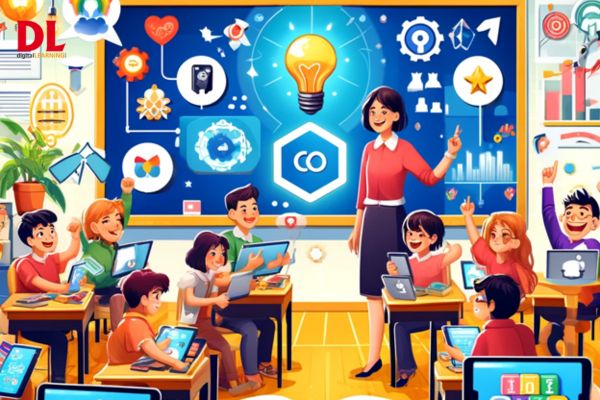
Keeping students engaged and motivated in their studies can be challenging in today’s digital age. One innovative solution that has gained popularity is gamification. But what exactly is gamification, and how does it impact student learning and engagement? Let’s explore!
What is Gamification?
Gamification involves incorporating game-like elements into non-game contexts. In education, this means using elements such as points, badges, leaderboards, and challenges to make learning more interactive and fun.
Also Read | Gamification – The futuristic approach to online learning
Benefits of Gamification in Education
- Increased Engagement: Gamification makes learning more interactive and enjoyable. When students are engaged, they are more likely to participate actively in their lessons. For instance, a study showed that gamified learning platforms significantly boost student engagement by making learning feel more like playing a game (J.P. Morgan Private Bank US).
- Enhanced Motivation: Earning rewards and achieving higher levels motivate students to complete tasks and strive for higher performance. According to research, badges and leaderboards can drive competition and encourage students to improve their performance (Fitch Solutions).
- Improved Learning Outcomes: Gamification can lead to better retention and understanding of information. Interactive elements such as quizzes and flashcards help reinforce learning in a fun and effective way. Studies have found that students who use gamified learning tools often perform better in assessments (McKinsey & Company).
- Encourages Collaboration: Many gamified platforms promote teamwork and collaboration, helping students develop important social and communication skills. Group challenges and team-based games can foster community and cooperation among students.
- Instant Feedback: Gamified learning provides immediate feedback, allowing students to understand their mistakes and learn from them quickly. This instant feedback loop helps reinforce knowledge and correct errors in real-time.
- Promotes Continuous Learning: The game-like environment encourages students to keep learning and progressing outside the traditional classroom setting. This continuous engagement helps in developing a lifelong love for learning.
Examples of Gamification in Education
- Kahoot!: A popular game-based learning platform where teachers can create quizzes, and students compete in real time.
- Classcraft: Transforms the classroom experience into a role-playing game, encouraging students to work together and stay engaged.
- Duolingo: A language learning app that uses gamification elements like streaks, points, and levels to make language learning more engaging and effective.
Challenges and Considerations
While gamification has many benefits, it’s important to implement it thoughtfully. Overemphasis on rewards can sometimes lead to extrinsic motivation, where students focus more on rewards than learning. Balancing game elements with educational goals is crucial to ensure that the primary focus remains on learning.
Also Read | “Gamification has brought about a revolution in the learning graph of young students”
Conclusion
Gamification can transform the educational landscape by making learning more engaging, motivating, and effective. By incorporating game-like elements into academic activities, educators can create a dynamic and interactive learning environment that enhances student engagement and improves learning outcomes.
Gamification offers an exciting and effective strategy for schools and educators looking to boost student engagement and learning. Embrace the power of gamification and watch your students thrive in a fun and stimulating learning environment.
























